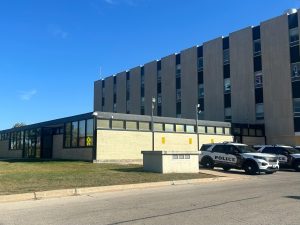Ozone protection sought
April 13, 1989
CHICAGO (AP) – Residents of the nation’s third-largest city may be in for some changes – ranging from expanded auto emission tests to gasoline rationing – to fight ozone pollution, officials said Wednesday.
More drastic measures would include gasoline rationing and limits on industry that could lead to layoffs. But Will Flower, spokesman for the Illinois Environmental Protection Agency, said he hopes federal officials will consider milder options first.
“We want to make sure that the air is clean, but that people still have jobs and still can get gasoline for their automobiles,” Flower said in an interview. “We think that’s doable, (and) we’re concerned that the U.S. EPA does not jump to these drastic measures.”
David Kee, chief of the air and radiation division of the U.S. Environmental Protection Agency’s Midwest region, said smaller changes – such as expanded tests of auto emissions or fume-catching accessories for gasoline pumps – will come first.
“We’re not going to put the extreme measures up front,” Kee said.
“We’re going to hold those off until the very end.”
But the city has little choice about whether to clean up its air.
A federal judge in January shifted responsibility for solving the Chicago area’s ozone problem from the Illinois EPA to its federal counterpart.
U.S. District Judge Terence Evans in Milwaukee, responding to a lawsuit filed by Wisconsin state officials, said the federal government should take over because state anti-pollution plans were “best characterized by delay.”
The judge set a 14-month timetable, meaning a clean-up plan must be in place by next spring.
Last summer, Chicago had 20 days of what the state characterized as unhealthful ozone levels, the most in 11 years, officials said.
Ozone is an unstable form of oxygen that develops when volatile chemicals such as those found in auto emissions react with sunlight on hot days. It is a health threat to people with heart or respirtatory ailments, the very old and the very young.
Flower said 14 months is too short of a time to develop a plan for fighting ozone pollution. The state has been sending plans to the federal government for approval for nearly a decade, only to have each rejected, he said.
Kee agreed 14 months is quick. But he said federal officials are working with the state and bickering among bureaucrats will not solve health problems caused by ozone.
“We think we can put a credible package together to meet the judge’s order,” Kee added.






